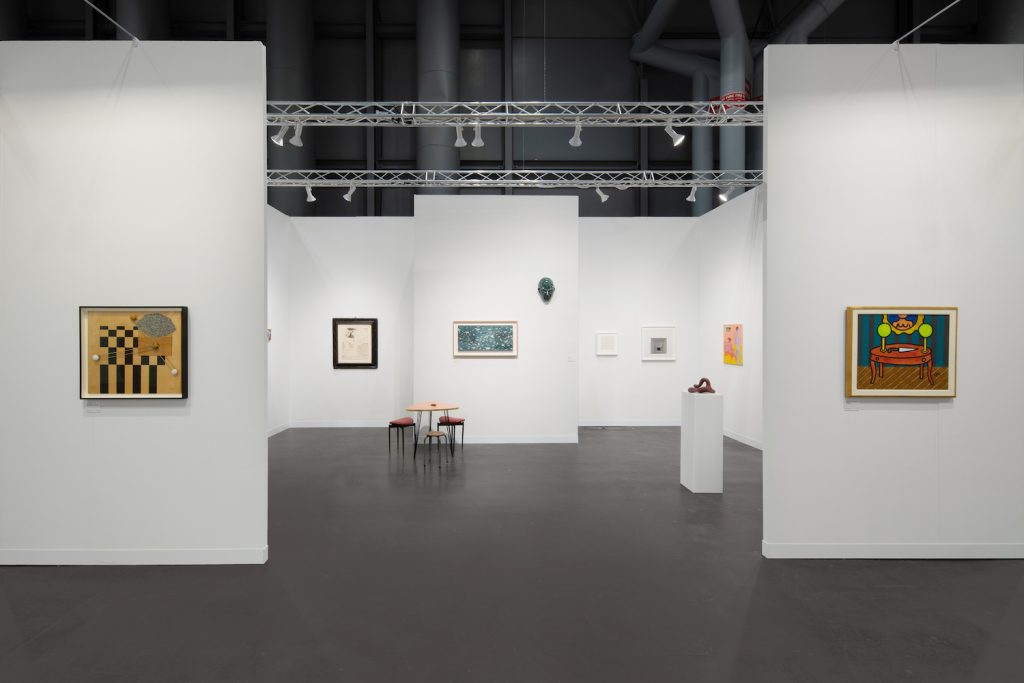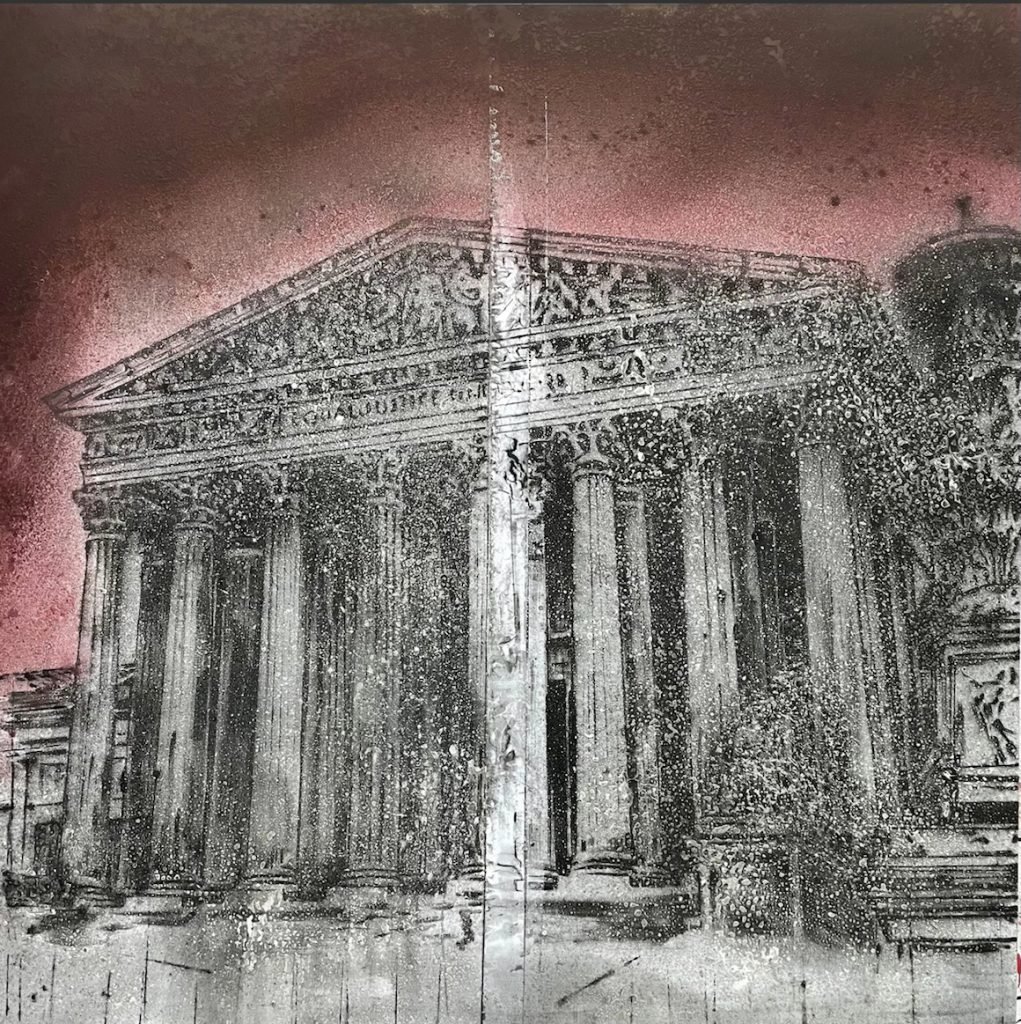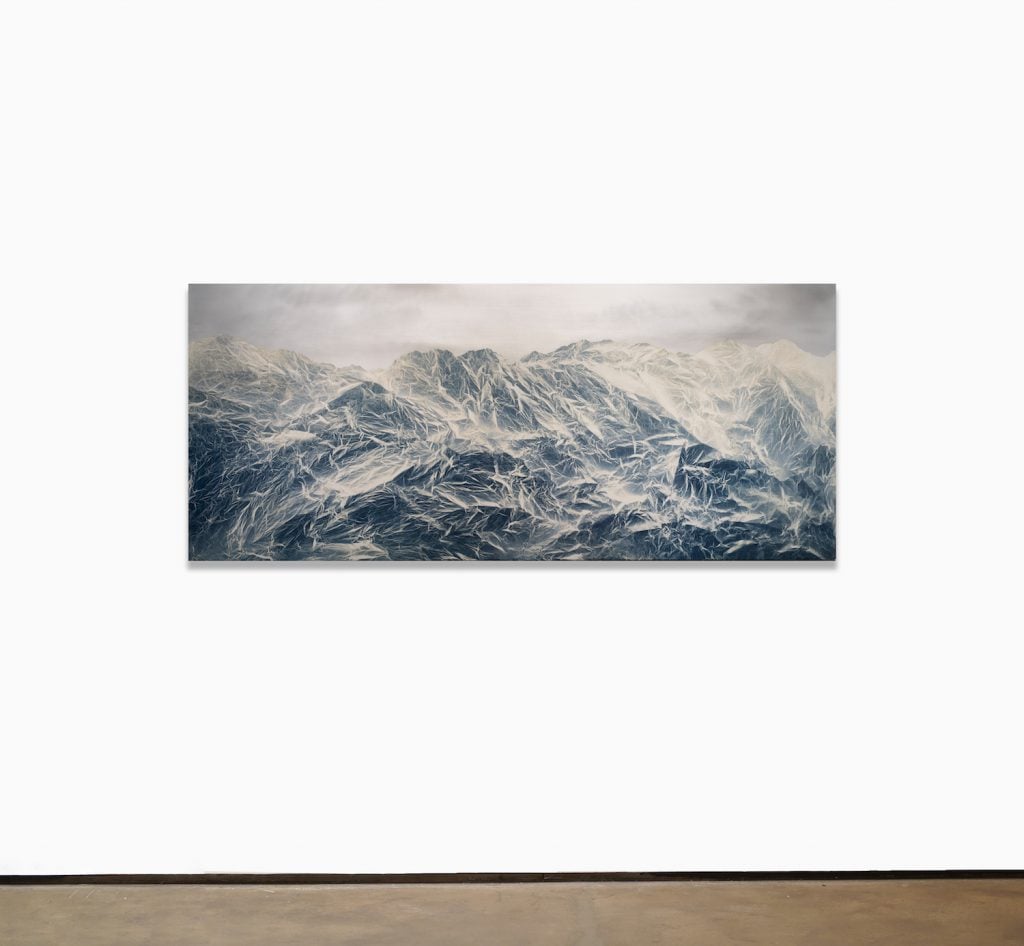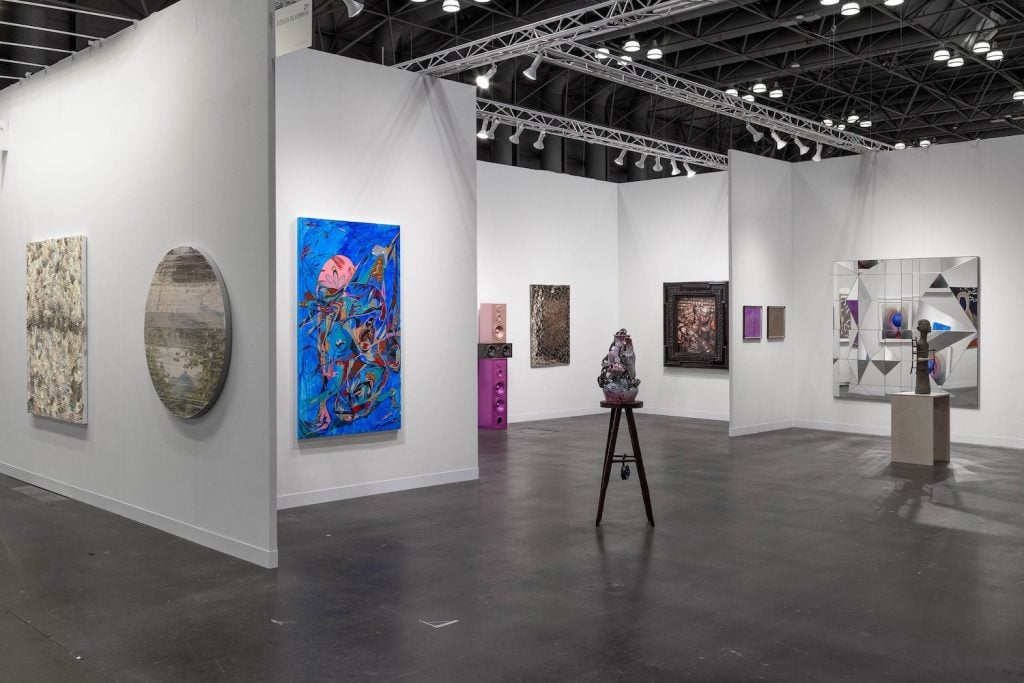Art Fairs
Collectors Were Decisive at the VIP Opening of the Armory Show, With Early Six-Figure Sales and a Focus on Latinx Art
Here's what sold on the VIP preview day of The Armory Show.

Here's what sold on the VIP preview day of The Armory Show.

Eileen Kinsella

Just over a year ago, thousands of New Yorkers waited in line outside the sprawling Jacob Javits Convention Center to get vaccinated. In a sign of just how much the world has changed since then, at the opening of the Armory Show at the same venue yesterday, the nurses in white coats and camo-clad National Guard members had been exchanged for iPad wielding art fair assistants, interested in checking VIP passes rather than vaccination cards.
Historically held at the Hudson piers, the fair officially debuted in its new home on the far West side of Manhattan last year, but this year’s edition felt momentous, not least due to a much greater number of international exhibitors no longer held back by Covid-security protocols.
“I feel like this is our proper debut,” executive director Nicole Berry told Artnet News as crowds of visitors descended on the fair in its early opening hours, adding that this iteration was more in line with the vision of what the full fair can and should look like in its new home. Along with art world denizens such as collectors and private museum founders Don and Mera Rubell, celebrities including Paul Rudd, Jared Leto, and Anderson Cooper were spotted among the early attendees.

Installation view of Zurich gallery Larkin Erdmann at the Armory Show. © Mikhail Mishin. Photo by Mikhail Mishin.
Amid last year’s uncertainty, some 55, mostly European, galleries downgraded their participation to virtual only, deferring their IRL attendance to this year. Nearly all were in attendance among the 240 total exhibitors this year, of which around 40 percent traveled from outside the U.S. The greater attendance and more international flavor reflects “what the Armory Show is going to be moving forward, with the quality of the exhibitors but also with the size of the fair,” Berry said. “It’s larger but manageable because of the space.”
Other key changes from last year’s event included a streamlined, improved layout, which allowed for better visitor flow through the booths and special sections—many visitors remarked that they had difficulty navigating last year’s more compartmentalized floor plan.
A whopping 90 more exhibitors attended the fair this year than in 2021. Among the first timers was Zurich-based Larkin Erdmann, who was thrilled to have his eponymous gallery accepted to the event. Erdmann was forthright about the lackluster results he had seen from participating in virtual fairs during lockdown, stressing that there is no substitute for the physical fair in terms of displaying works and interacting with collectors.
By the end of the first day VIP preview, he had sold a $150,000 Ken Price sculpture, as well as works by March Avery, Agnes Martin, and Alighieri Boetti, to U.S. collections, and placed a Gaston Chaissac painting with a museum.
“We’re thrilled to be participating in The Armory Show for the first time,” said Ricardo González Ramos, director of Galería RGR from Mexico City. “The organization is excellent; in the first day, we experienced great attention from collectors and institutions,” he said. The gallery showed a range of Latin American artists, mixing abstraction with modern and contemporary works, including by Julio Le Parc, and Carlos Cruz-Diez among others.

Jorge Tacla, Breaking News 2, (2022). Image courtesy the artist and Cristin Tierney.
Also new were additions to the fair’s curated sections. Joining “Solo” and “Presents” (for galleries that are less than a decade old), were “Platform” and “Focus,” which stood out for the range of artists and works showcased. The “Platform” section, which was curated by Tobias Ostrander and titled “Monumental Change,” examined how recent revisionist practices, including with respect to major public monuments, are influencing artists’ engagement with sculptural form.
Meanwhile “Focus,” curated by Carla Acevedo-Yates and titled “Landscape Undone,” emphasized Latinx artists, and works “that examine the intersectionality of issues surrounding the environment, focusing on personal and political climates as they interact with race, gender, and power.” Among them, New York gallerist Cristin Tierney presented a solo booth of work by Chilean-born artist Jorge Tacla, who was one of the first artists she welcomed into her gallery roster after establishing it in 2010.
Tierney was delighted to present Tacla at the fair in this context. “He’s from Santiago and has been in New York for many years and lived this back-and-forth existence like many artists of Latin descent,” she said, evoking the various political situations and social stresses that entails. By the end of the first VIP preview day, sales included Breaking News 2 (2022) for $50,000.

Wu Chi Tsung at Sean Kelly Gallery at The Armory Show. Image courtesy Sean Kelly.
For veteran dealer Sean Kelly, who showed in both the main galleries section and in “Focus,” sales in the latter section included all three large works by Hugo McCloud priced at $200,000, and four flower still lifes at $25,000 each.
A delighted Kelly said the gallery had been busy reconnecting with clients, friends, and colleagues. “The start of the fair has seen brisk business and been a great success,” he said. Sales included paintings by Landon Metz ($29,000); Idris Khan ($57,400 / £50,000); Sam Moyer ($40,000); John Guzman ($37,500), and Wu Chi-Tsung ($45,000).
Business was swift in the main section of the fair, too. In the opening moments of the fair, San Francisco gallerist Jessica Silverman sold works including a ceramic sculpture by Woody De Othello, Unbound, for $60,000; sculptures by Rose B. Simpson for $55,000 and $65,000 respectively; three works on paper by Sadie Barnette for $28,000 each; a pastel on paper, Fully Dilated, by Loie Hollowell sold for $60,000.00; and an acrylic painting titled A Color Picture IV by Luke Butler, for $24,000.
Silverman said the booth had been visited by major collectors and museum curators during the first hour of the fair, and the steady stream continued throughout the day. “The immediate response to our presentation affirms the focus it places on women artists and those who are pushing forward both their own practice—and art making more generally—into new exciting forms and expressions,” she said.

Courtesy of Jessica Silverman, San Francisco. Photo by Tim Johnson.
By day’s end, according to Armory Show organizers, other sale highlights included: a $350,000 Huma Bhabha sculpture at David Zwirner; a number of Vaughn Spann paintings (between $100,000 and $300,000) at Almine Rech; a $260,000 stainless steel George Rickey sculpture at Kasmin; a $200,000 Omar Ba piece at Galerie Templon; a series of Guillaume Bresson works ranging from $130,000 to $180,000 at Galerie Nathalie Obadia; a $110,000 work by Marco A. Castillo at Galeria Nara Roesler, and two Jenna Gribbon paintings that sold for $90,000 and $100,000, at Fredericks & Freiser.
The Armory Show is on view through September 11 at the Javits Center, New York.